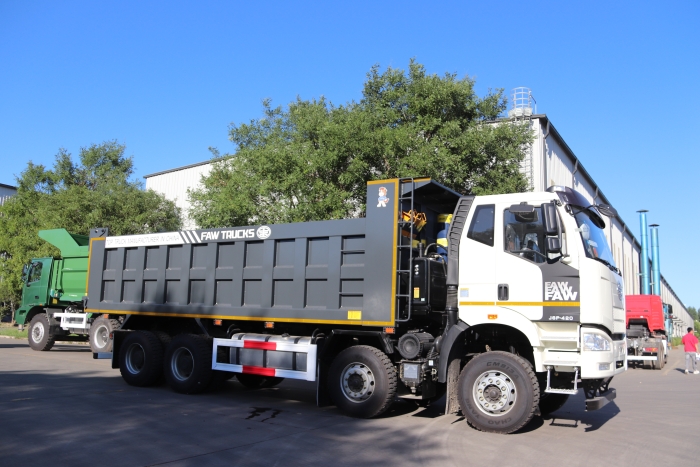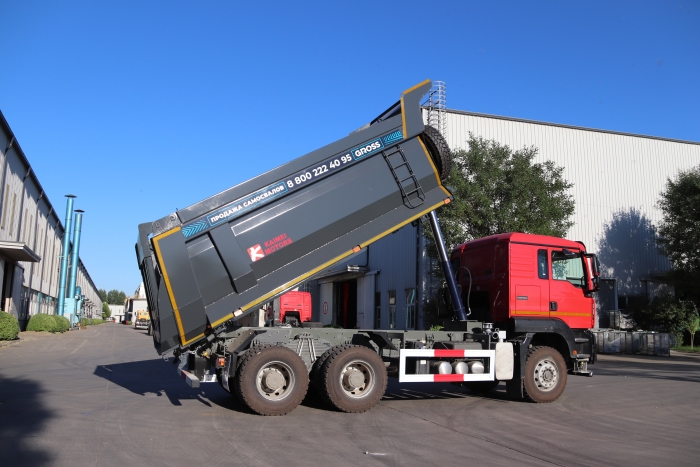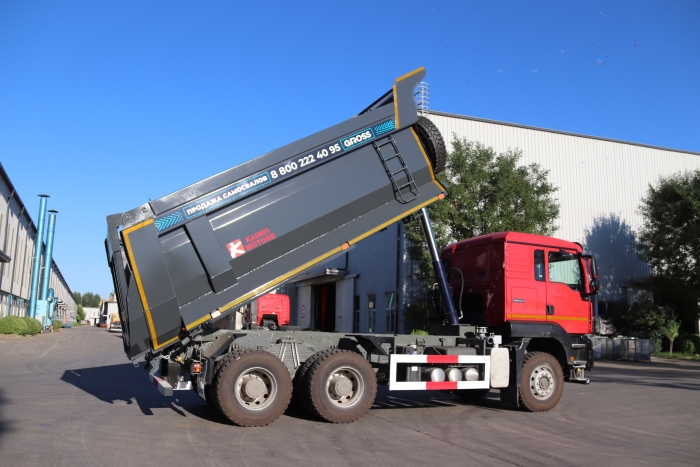- PRODUCTS
- SOLUTION
- SERVICE
- NEWS
- ABOUT US
A 4-axle semi-trailer offers increased load capacity, enhanced stability, improved safety, and efficient fuel consumption, making it ideal for heavy-duty transportation across various industries.
A 4-axle semi-trailer is a heavy-duty transportation tool equipped with four axles. This design significantly enhances its capability to transport large and heavy loads. It stands out in the transportation industry for its robust construction and exceptional load-bearing capacity.
Comparing 4-axle semi-trailers with two or three-axle variants reveals key differences:
Feature | 4-Axle Semi-Traile | 2 or 3-Axle Semi-Trailer |
| Load Capacity | Higher - Can carry more weight | Lower - Limited by fewer axles |
| Stability | Enhanced - Better distribution of weigh | Less stable, especially under heavy loads |
| Road Impact | Reduced Wear on roads | Higher road impact due to concentrated weight |
| Maneuverability | Requires skill due to size | Easier to maneuver due to smaller size |
The 4-axle design offers a clear advantage in terms of load capacity and stability. This makes it a preferred choice for transporting heavier and larger cargo, where safety and efficiency are paramount.

4-axle semi-trailers excel in their ability to carry significantly heavier loads compared to their counterparts. This superior load-bearing capacity stems from the additional axles, which distribute the weight more evenly across the trailer. Key aspects include:
· Maximum Load Capacity: Can range from approximately 60,000 to 80,000 pounds (27 to 36 metric tons), depending on the specific model and configuration.
· Weight Distribution: The four axles ensure a more balanced distribution of weight, reducing the pressure on any single point of the trailer.
The way cargo weight is distributed in a 4-axle semi-trailer plays a crucial role in ensuring both stability and safety during transportation. Key points include:
· Enhanced Stability: Even distribution of weight across four axles leads to improved stability, particularly important when transporting high-density loads.
· Safety Considerations: Better weight distribution minimizes risks like tipping or jackknifing, especially in challenging driving conditions.
The 4-axle design not only supports heavier loads but also contributes to safer and more reliable transportation, essential for heavy-duty hauling needs.

4-axle semi-trailers offer distinct handling characteristics that set them apart from trailers with fewer axles. These characteristics are vital for ensuring safe and efficient transportation:
· Stability in Handling: The additional axles provide enhanced stability, making it easier to handle the trailer, especially when loaded heavily.
· Braking Efficiency: With more axles, the braking system is more effective, offering shorter stopping distances and increased safety.
· Maneuverability Challenges: Due to their size, 4-axle semi-trailers can be more challenging to maneuver, particularly in tight spaces.
The experience of driving a 4-axle semi-trailer varies significantly depending on road conditions:
· Smooth Roads: On well-maintained roads, these trailers offer a comfortable driving experience, with less bouncing and jostling of cargo.
· Rough Terrain: The extra axles provide better shock absorption, making rough terrains more manageable, though drivers must be cautious due to the trailer’s size.
· Adverse Weather Conditions: In conditions like rain or snow, the additional weight and axles contribute to better grip and control.
The handling and driving experience of 4-axle semi-trailers underscore their suitability for a range of transportation needs, balancing the challenges of maneuverability with the benefits of stability and safety.
When considering the economic aspects of 4-axle semi-trailers, fuel efficiency plays a crucial role. Despite their size, these trailers can be surprisingly efficient:
· Advancements in Technology: Modern 4-axle trailers often incorporate advanced aerodynamic designs and lighter materials, leading to improved fuel efficiency.
· Average Fuel Consumption: While specific numbers vary, a well-maintained 4-axle semi-trailer can average between 6 to 8 miles per gallon (mpg), depending on the load and road conditions.

The long-term financial perspective is essential when evaluating the cost-effectiveness of 4-axle semi-trailers:
Aspect | Detail |
Initial Investment | Higher upfront cost due to additional axles and robust construction. |
Maintenance Costs | Regular maintenance is imperative but can be costlier due to the complexity of the trailer. |
Load Capacity | Ability to carry larger loads reduces the number of trips needed, leading to long-term savings. |
Durability | Typically, these trailers have a longer lifespan, providing value for money over time. |
Key Takeaway: While the initial investment and maintenance costs for 4-axle semi-trailers are higher, their increased load capacity and extended lifespan often result in overall cost savings in the long term.
4-axle semi-trailers are exceptionally versatile, catering to a wide range of cargo types and transportation requirements. Their design makes them ideal for various applications:
Cargo Type | Suitability |
Heavy Machinery | Perfect for large construction or industrial equipment due to high load capacity. |
Bulk Commodities | Ideal for transporting large quantities of materials like grain, coal, or minerals. |
Oversized Loads | Can accommodate larger items that exceed standard dimensions, such as wind turbine blades. |
General Freight | Suitable for standard palletized goods, providing flexibility for general logistics operations. |
4-axle semi-trailers have a broad spectrum of applications across multiple industries:
Industry | Application |
Construction | Essential for moving heavy equipment and materials to and from construction sites. |
Logistics and Transportation | Enhances efficiency in the movement of various goods, optimizing supply chain operations. |
Manufacturing | Supports the transport of large quantities of raw materials and finished products. |
Agriculture | Ideal for transporting bulk agricultural products, contributing to the efficiency of the agricultural supply chain. |
Key Insights: The 4-axle semi-trailer's ability to handle diverse cargo types and its applicability in numerous industries underscore its value as a flexible and efficient transportation solution.

Maintaining a 4-axle semi-trailer is crucial for its performance and longevity. Regular and thorough maintenance ensures these vehicles remain reliable and efficient. The following table details the key maintenance aspects:
Maintenance Aspect | Details |
Regular Inspections | Routine checks of brakes, tires, axles, and suspension systems are essential. |
Tire Maintenance | Frequent monitoring and maintenance of tires to handle the heavy load. |
Brake System | Regular checks and servicing of the brake system for safety. |
Lubrication | Ensuring all moving parts are well-lubricated to prevent wear and tear. |
Cleaning | Regular cleaning to prevent rust and corrosion, especially in harsh weather conditions. |
4-axle semi-trailers are designed for durability and can withstand rigorous use:
· Construction Quality: Built with high-quality materials, these trailers resist wear and tear effectively.
· Lifespan: With proper maintenance, a 4-axle semi-trailer can last for 15-20 years or more, depending on usage.
· Reliability: They are known for their reliability, even under tough conditions, making them a preferred choice for heavy-duty transportation.
Key Point: The durability and reliability of 4-axle semi-trailers make them a cost-effective option in the long run, despite the need for regular and sometimes intensive maintenance.